Beyond the Frame 57/
The value of acknowledging what’s hiding in plain sight. How a construction container provided a solution to a photographic problem. Plus, reflections on the 2025 Photo Book Switzerland book fair.
Hiding in plain sight
“Creativity isn’t always about invention. Sometimes, it’s about recognition.”
— GG
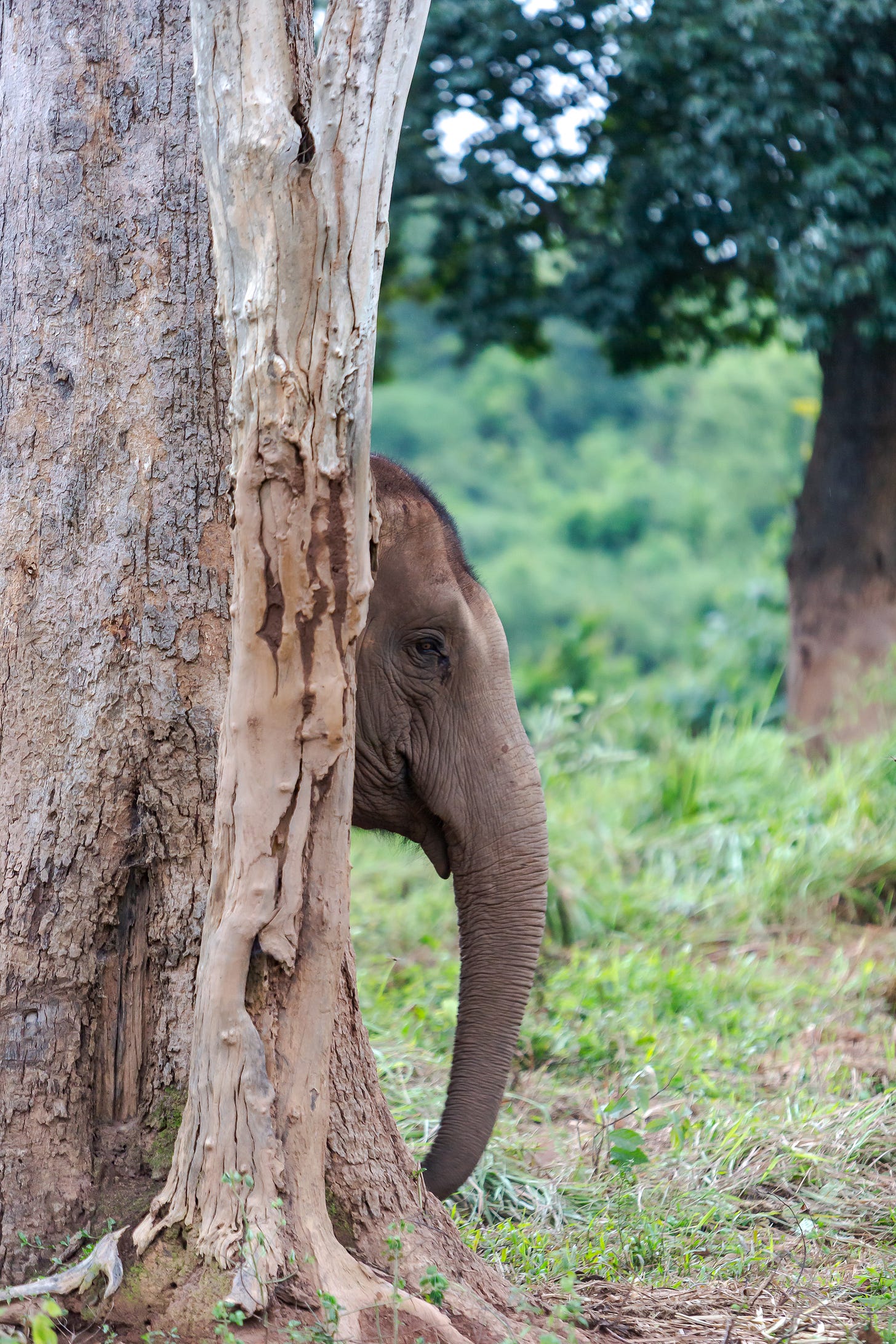
Not everything that’s hiding in plain sight is doing so quite as ineffectively as this bashful Asian elephant.
She wasn’t hard to spot, being, after all, the size of an elephant. I noticed her whilst working on an assignment photographing elephant conservation projects. When you’re looking for elephants, all you see is elephants, even if some are trying to hide behind large fig trees.
I was reminded of this hide-and-seek elephant when reading some of Mary Oliver’s poems this week. Mary often writes about the value of attention and observing things that appear to be hiding in plain sight.
“Imagination is better than a sharp instrument. To pay attention, this is our endless and proper work.”
— Mary Oliver
Attention
Elsewhere, I too have been writing about attention, looking at how the important, and sometimes troublesome, aspects of our lives can fade to near invisibility when disregarded. Often these elements are substantial and significant but because they are ever-present we adapt and eventually ignore them. They become the elephant in the room – or behind the fig tree, if you prefer.
It might be something as simple as a misaligned cupboard door, the imperfection eventually becoming a characteristic. It’s the squeaky floorboard that you habitually step around, the recurring backache that lives in the margins of your awareness, the ever-present hum of a fridge in need of servicing, or a family role you default to despite its suffocating limitations. It might be banal: the glitchy, outdated computer software that you learn to tolerate, or as profound as the silent, gradual drift of a close friendship. I’m sure we all have parts of our lives, large and small, that would benefit from closer attention.
I don’t have a pithy solution. This isn’t TikTok. But I have been trying to be more observant about the significant things in my own life which are hiding in plain sight. For example, I buy far too many books which remain frustratingly unread. I haven’t addressed a habit of clenching my jaw when I am deep in thought. And, as a friend recently reminded me, I have passion projects which still only live in my head because I’m always waiting for the “perfect time” to begin (Thank you, Troy, you’re so right).
Mary Oliver and Molly Malone Cook
Coincidentally, the poet Mary Oliver (see above) popped up in a post on my favourite website: The Marginalian.
The love of Mary’s life was photographer Molly Malone Cook. After Molly’s death, aged 80, Mary compiled a collection of her own poems alongside Molly’s photographs. The book, Our World, is ”part memoir, part deeply moving eulogy to a departed soul mate, part celebration of their love for one another through their individual creative loves.” – The Marginalian.
Mary and Molly shared “a sense of deep aliveness and attention to the world, a devotion to making life’s invisibles visible.”
“It has frequently been remarked, about my own writings, that I emphasise the notion of attention… Watching Molly when she was taking photographs, and watching her in the darkroom, and no less watching the intensity and openness with which she dealt with friends, and strangers too, taught me what real attention is about. Attention without feeling, I began to learn, is only a report. An openness – an empathy – was necessary if the attention was to matter.”
— Mary Oliver
Heads-up
Here’s a practical example of my noticing something hiding in plain sight and being able to put it to good use.
Last week I was working on a tutorial to illustrate the concept of isolating people (particularly heads, faces, expressions) in a busy environment. I admit that I set out with a preconception. I had planned to make images of passengers on buses and trams, ideally caught in a pool of light, drawing the eye to their expressions against the darker surround of the bus/tram interior.
Responding quickly to a fleeting moment, framing, and focussing on a face as a bus or tram passes by is something I’ve done many times and I’m pretty comfortable with. Perhaps that’s why I persevered with that strategy even when I began to see it wasn’t really producing what the brief required.
It was really the wrong time of day for that approach. The bus and tram interiors were much darker than the brightly lit streets and the results were too random to build the consistent series of images that I needed for my planned tutorial.
I’ve learned the value of perseverance but also know to accept when it’s time to find a new approach. And so, seeing it hiding in plain sight, I looked at a bright yellow and blue container standing nearby from a different perspective.
The container is obviously not a part of the city’s architecture and is something I’d typically work hard to keep out of my images. But for this mini-project, it proved to be a useful way to maintain a consistent background against which passersby would stand out much more clearly than in my bus/tram images.
I think the difference between my first set of images and the images made with the container is notable. I hadn’t changed location, just my viewpoint and approach. Instead of moving constantly, reframing, and refocussing, it was necessary to stay still, frame, meter, focus once, and anticipate. The latter technique is far simpler.
Pretty quickly, I’d made more than 50 images of passersby, each isolated against the bright container. For the purposes of the task at hand, it was a much more successful approach.
If pushed, I’d readily admit that I prefer the challenge of making the bus/tram images and I enjoy seeing how serendipity will play its part. But the assignment was to create a series of images showing people’s heads, faces, and expressions in a consistent manner and the container allowed me to achieve that.
Two observations
I realise that many of us are tied to our mobile phones with an invisible umbilical cord but I was surprised to see just how many people look at their phones whilst walking. More than 50% of the people I photographed were striding along quite happily, presumably texting or watching a YouTube video. I recently read an article where it was suggested that the largest migration in human history has been a virtual one from the real world to the internet. I think that’s an accurate perspective. So many people are, for large parts of the day, physically in the real world but mentally and emotionally inhabiting a virtual, online universe.
Perhaps that’s why, even though I was standing only 3 meters away, only one person paid me any attention. I’m sure he was the only one to notice me, and I’m far from inconspicuous. Anyway, this man’s quizzically raised eyebrow wins my vote for Photo of the Day. Frankly, I welcomed the connection.
Conclusion
If any aspect of my newsletter was consciously designed to elicit engagement – which apparently is what “content providers” are encouraged to do – I’d now write something like, “So, what is hiding in plain sight in your life?” but I respect you too much for that. You’re a grown-up. If you’ve bothered to read this far then your engagement has already exceeded my expectations.
(Having said that, the comments are open and clicking the Like button is entirely free – and appreciated. 😘)
Photo Books Switzerland
I was pleased to attend the 2025 Photo Books Switzerland event last weekend. Inevitably, I left the venue carrying a much heavier bag and a much lighter wallet.
In many ways, photo-book fairs have replaced sweet shops as a reliable source of excitement in my life.
Fizzy Treats
As a child, a visit to the sweet shop with 20 pence pocket money would yield 10 fizzy flying saucers, 10 Fruit Salads, 2 Sherbet Fountains, and a packet of Love Hearts. Photo books are considerably more costly but seem to last a lot longer.
Love Hearts, by the way, are still available but the messages they carry have changed over the years. In the 1960s you might have unwrapped “GROOVY” or ”BE HAPPY”. The ‘70s introduced ”HUNK” and ”HOT LIPS” and the ‘80s revealed the somewhat disconcerting ”FAX ME!”.
Love Hearts continue to be a reliable barometer for the prevailing attitudes of our changing times as these modern versions show.
New Photo Books
Photo book fairs provide opportunities to speak with photographers about their passion projects. Books are often self-published, almost invariably the result of several years’ work, and any conversation with an artist about a project they’ve devoted considerable time and energy too is, by definition, going to be an inspiring one.
And so it was when I had a chat with photographer Alex Llovet about his book, And Into The Forest I Go.
And Into The Forest I Go – Alex Llovet
In the Spanish mountain forests of Collserola, a short distance from Barcelona, Alex has spent ten years photographing the woodland interior and the people who live amongst the trees.
I’ve made a very quick video to share a sense of the journey that Alex’s book invites readers to take. You might notice the carefully-chosen colour palette with an absence of blue tones. As Alex explained, one rarely sees the sky from inside the forest, where earthy browns and all shades of green dominate.
Looking through the book, it’s clear how very carefully the images were made and how thoughtfully they have been edited and sequenced. You’ll see tree and branch shapes illuminated only by the light of the moon. You’ll see an image of a branch poking through a car windscreen immediately followed by another of a tree growing through man-made blocks, nature literally poking a stick at humanity’s attempts to overwhelm it. You’ll find gentle, considered portraits made on location. Every image has something to say and it’s a book that I’ve enjoyed looking through many times in recent days.
I hope you’ll find a journey through Alex’s Collserola forest as magical as I do. It is, to employ a much-overused word, a truly authentic endeavour.
You can order your own copy of Into The Forest I Go from the publisher’s website.
Archives from my camera – Dorentina Emini
I also had a chance to speak with Dorentina at the book fair. She’s a Swiss-based film photographer but she’s compiled a collection of photos from her phone’s camera roll into an intriguing book.
“These photographs are a spectrum of what catches my eye daily”
— Dorentina Emini
You can check out Dorentina’s Instagram account to get a sense of what’s included. There are abstract photos, portraits, landscapes, close-ups, skies, advertising posters…
Most of us who use a phone camera regularly have probably built a library of images that reflect the everyday moments of our lives. We might have screenshots, scans of receipts, photos of flowers we’ve forgotten the names of, copies of restaurant menus, handwritten recipes, lightbulbs and unusual batteries that need replacing… Perhaps unwittingly we have slowly but surely built a visual diary of our daily lives.
Sensibly, Dorentina has edited out the less interesting images, leaving a fine collection of acutely-observed people and places. Flicking through the book is like scrolling through a camera roll. Each turn of the page reveals something unpredictable and I’ve found that endlessly fascinating.
Holding the camera – Alberto Vieceli
My third purchase was a thick, postcard-sized volume containing hundreds of black and white photos of, you guessed it, people holding cameras.
The photos were taken from long-since redundant camera instruction manuals, mostly from the 1960s and ‘70s. They illustrate a technique that’s hardly worth mentioning in the age of the mobile phone – how to hold a camera.
It’s a lovingly curated collection of images that’s brimming with affectionate nostalgia. I’ll include one frame from the book in each future edition of Beyond the Frame. This edition brings you a 1962 Brownie Starmite II, held by a lady with a piercing, one-eyed stare.
“For all ‘inhabitants of the photographic universe,’ the search for the right position, detail, and moment to press the release is also a search for oneself.”
— From “Typology of Holding On” by Nadine Olonetzky
Quite!
Rencontres d’Arles
I shall be attending the Rencontres d’Arles Photography Festival in the south of France from 7–14 July.
Rencontres d’Arles has been running for more than fifty years and has grown to become one of the world’s most prestigious and highly-regarded showcases for photographic talent.
The festival hosts dozens of exhibitions, events, and workshops. There is also a large Photo-Book Fair so I’m guaranteed to find many more must-have books to carry home.
If you’re going to be in Arles next month, give me a shout or find me on the festival’s Pro networking app.
PS - Today is the one-year anniversary of the first edition of Beyond the Frame.
In the past year I’ve published 57 overly-long editions and featured 185 different photographers, photography resources, books, films, photo contests and events. You can read all editions for free by browsing the Directory and find specific topics in the catalogue of Resources.
Thank you for reading.
Until next time, go well.
Directory: Beyond the Frame newsletter archive.
Resources: Recommended books, films, gear, media etc.
Beyond the Frame 56/
A decidedly analogue edition featuring open wine cellars in Geneva, the bane of “the beep”, the joys of The Repair Shop, and a new book: Artisans of Dartmoor.


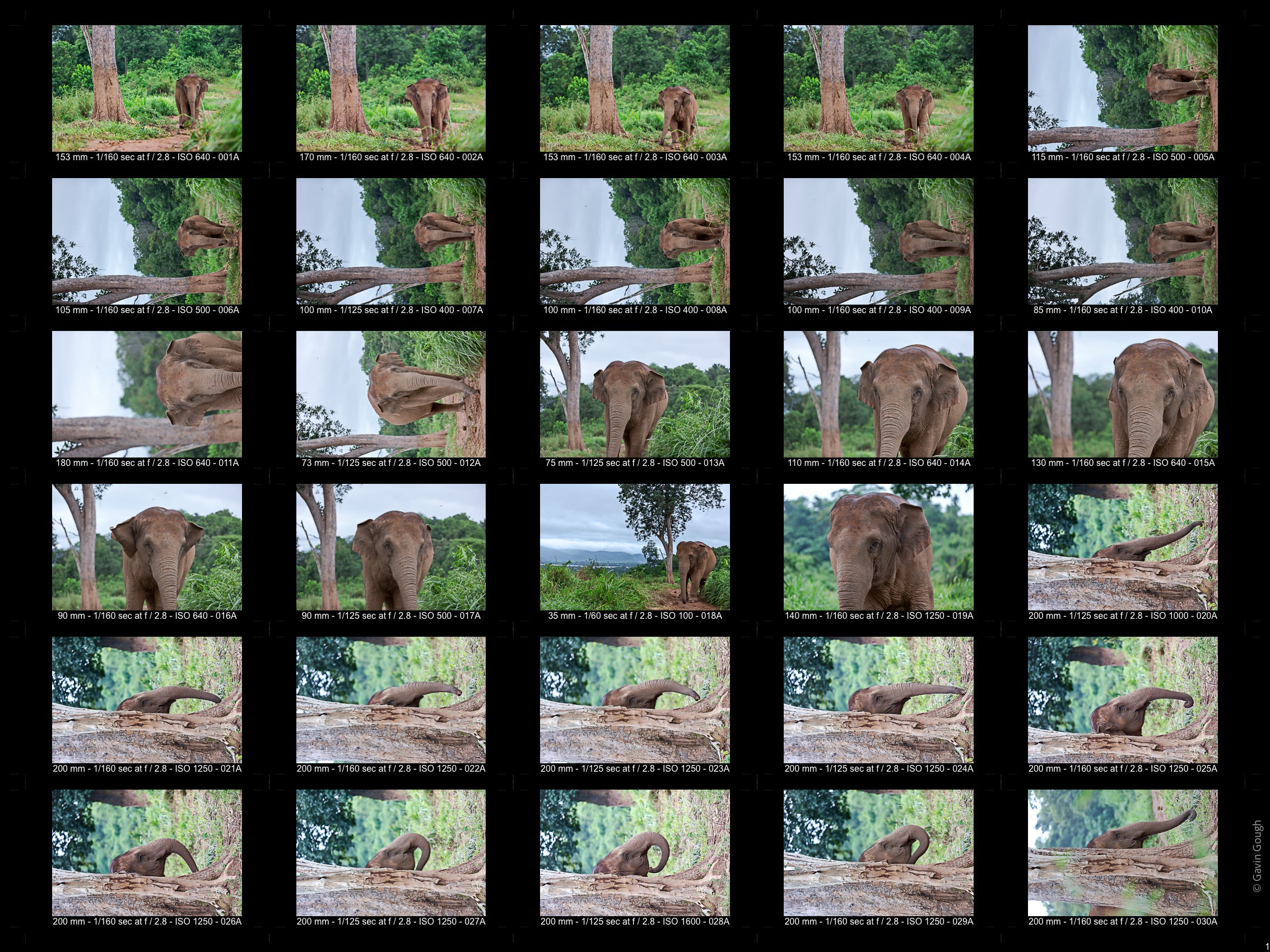


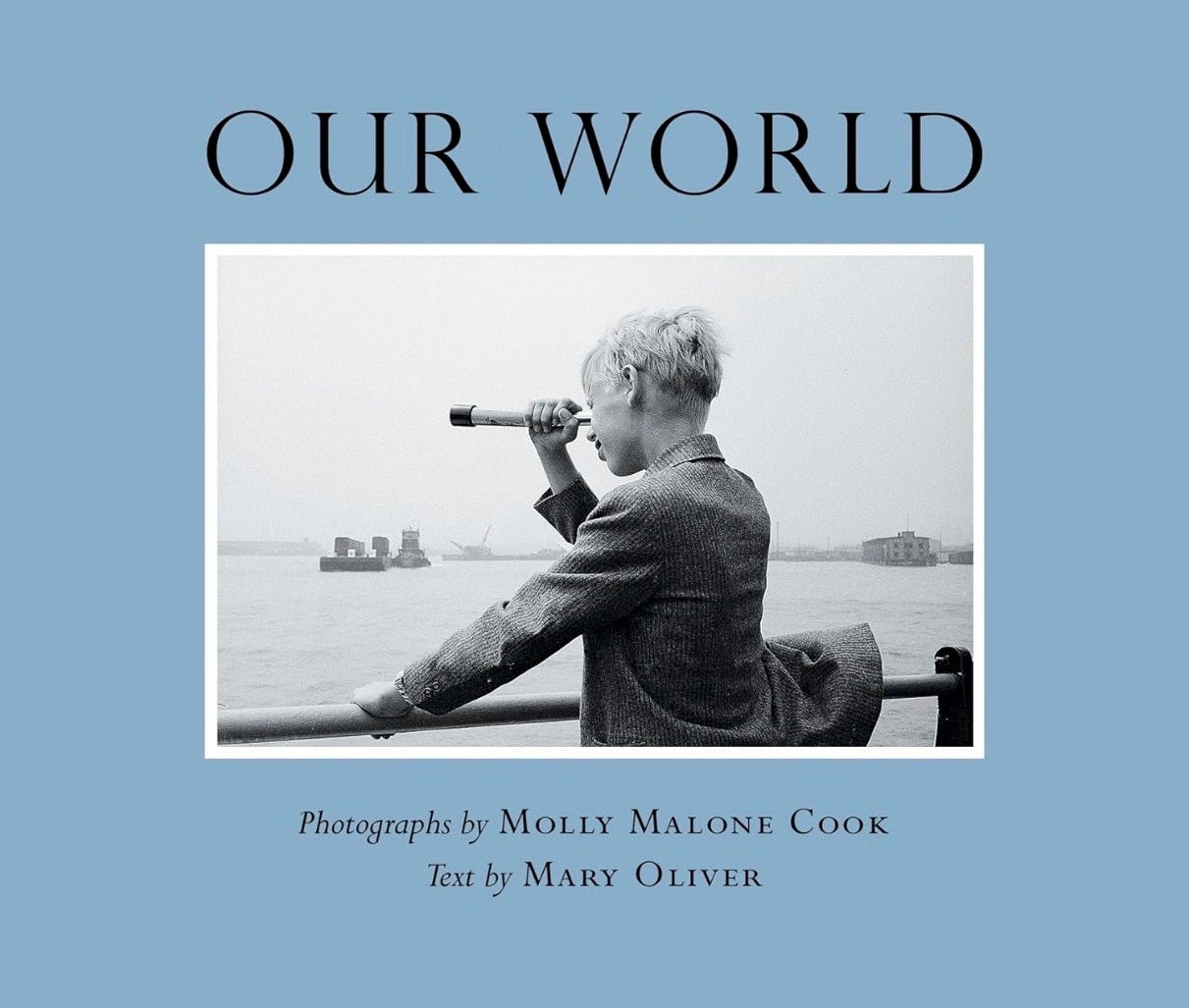

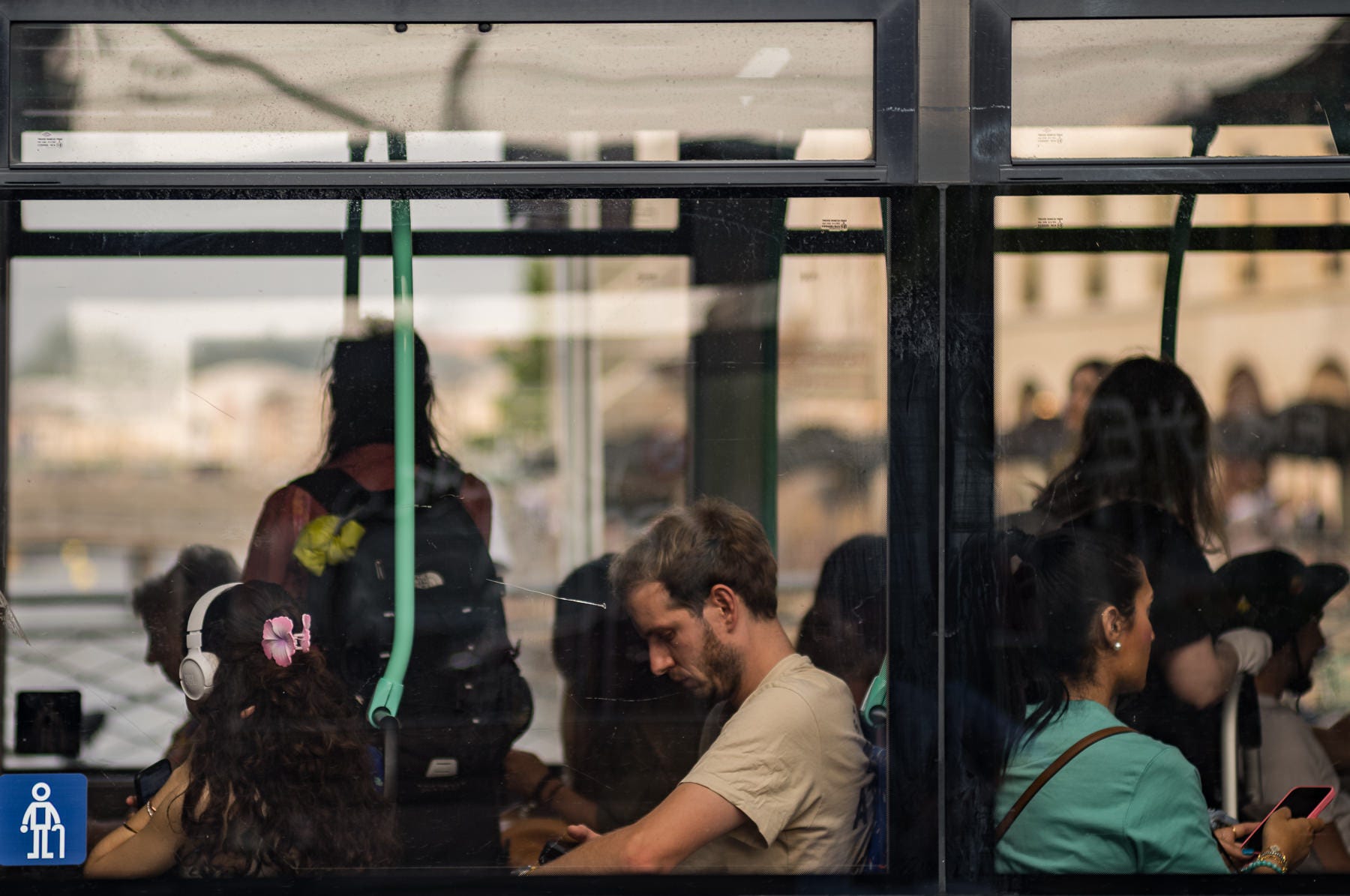








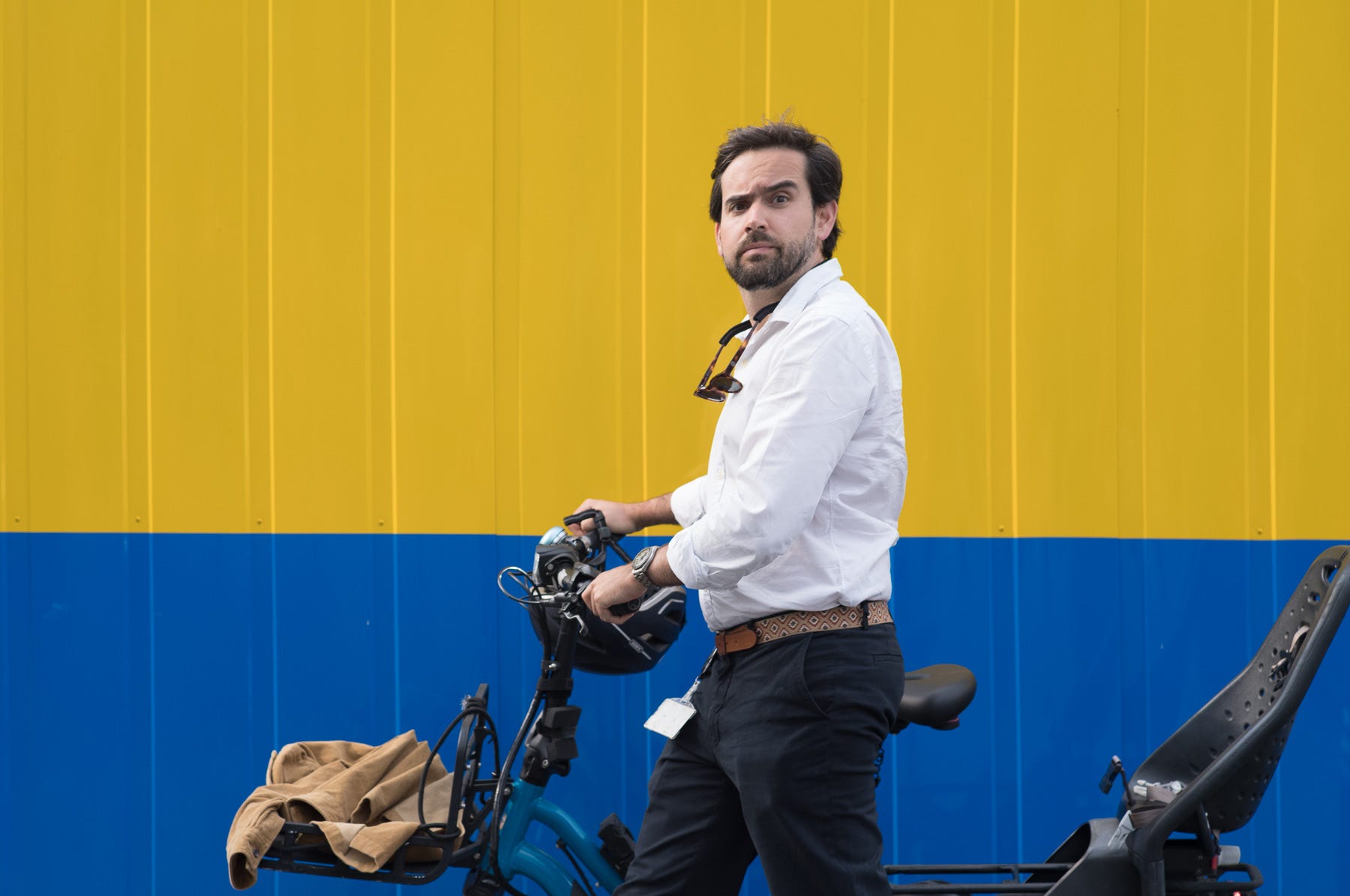
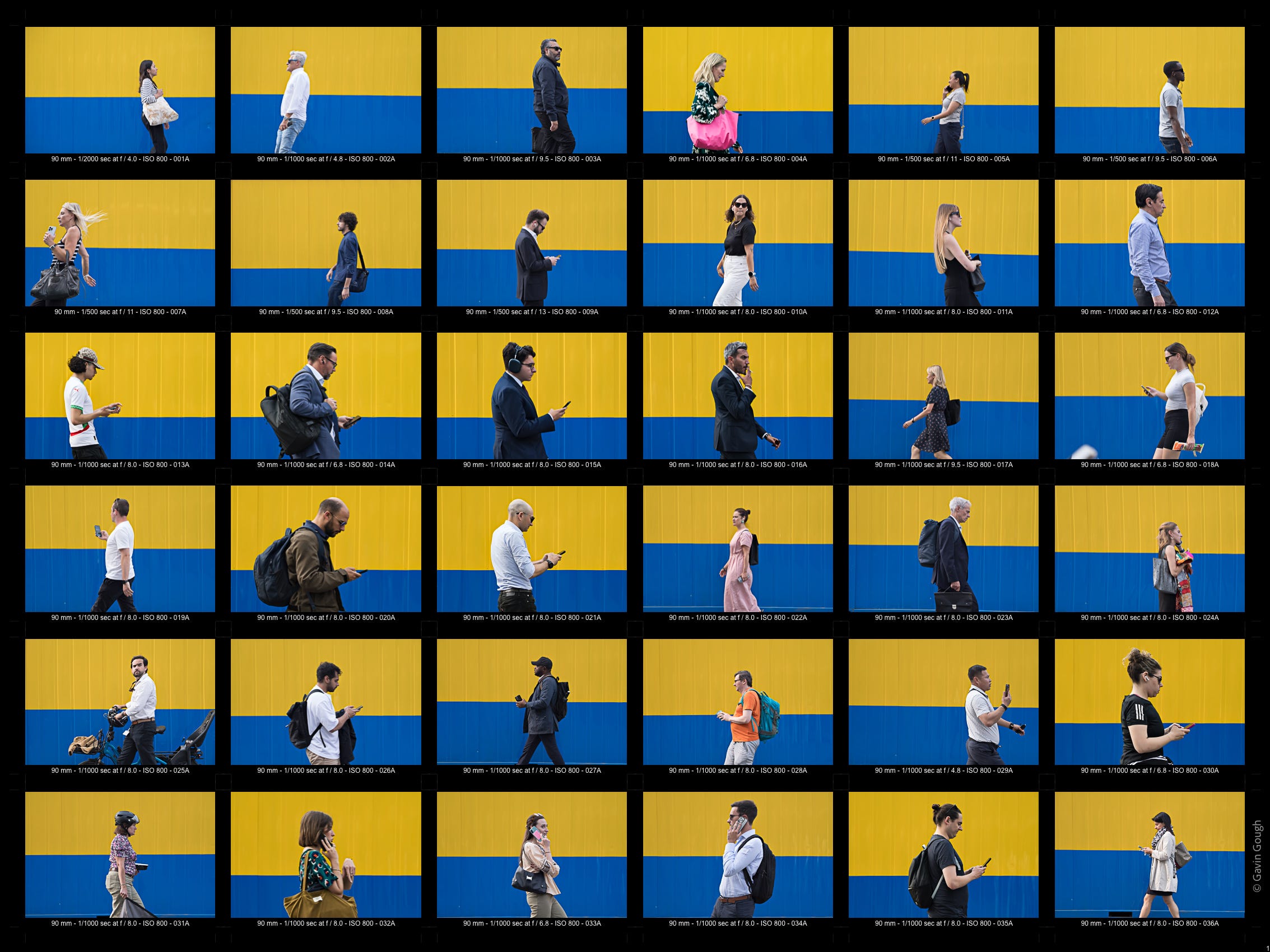
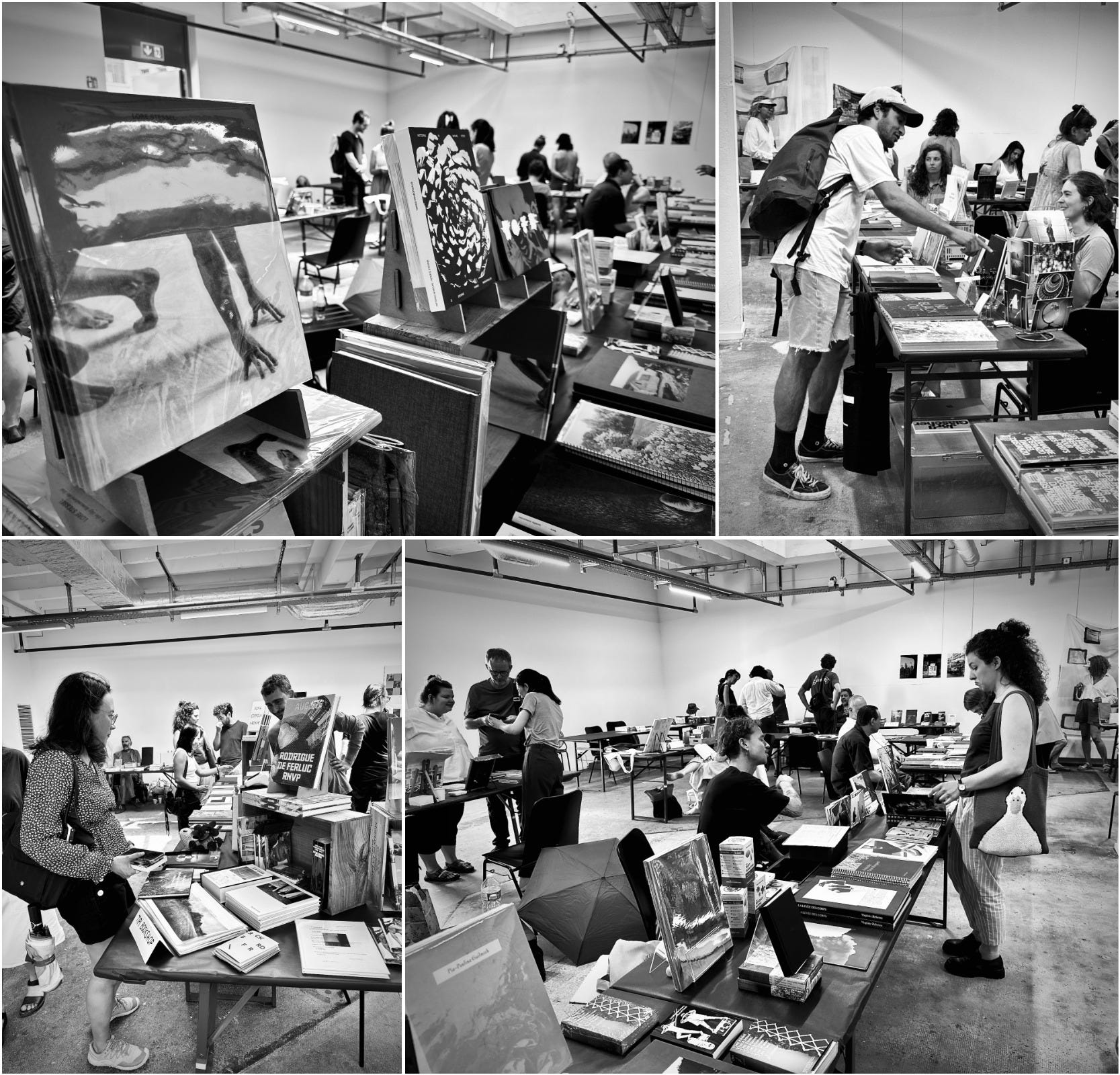










Great post Gavin - I'm glad I took the time to slow down and read it - and notice new things. Really appreciate the time and thought (and photos!) you put into these.
Engagement? You got me with the first photo of the elephant, then on to Mary Oliver, and then to your sharing about your assignment and how you adapted it plus the results. I'm not surprised that most everyone is bent forward with vision narrowed to a little screen holding a world of fantasy and elsewhere-ness. A sad truth about "us". Lately I've been listening for what's hiding in plain sight. Bird sounds mostly but so many other sounds that tell me a story about something I cannot see. Thank you for all you share.